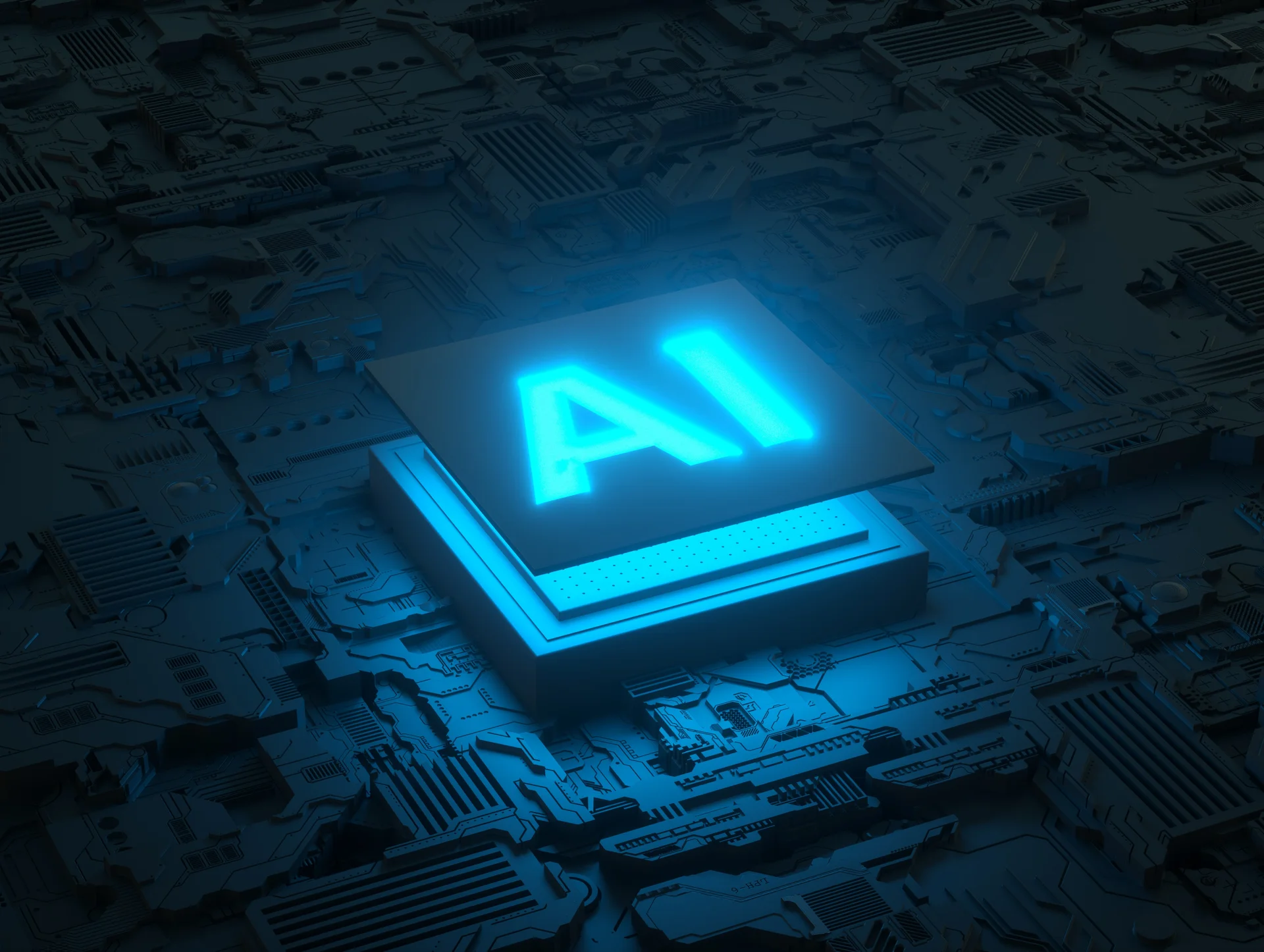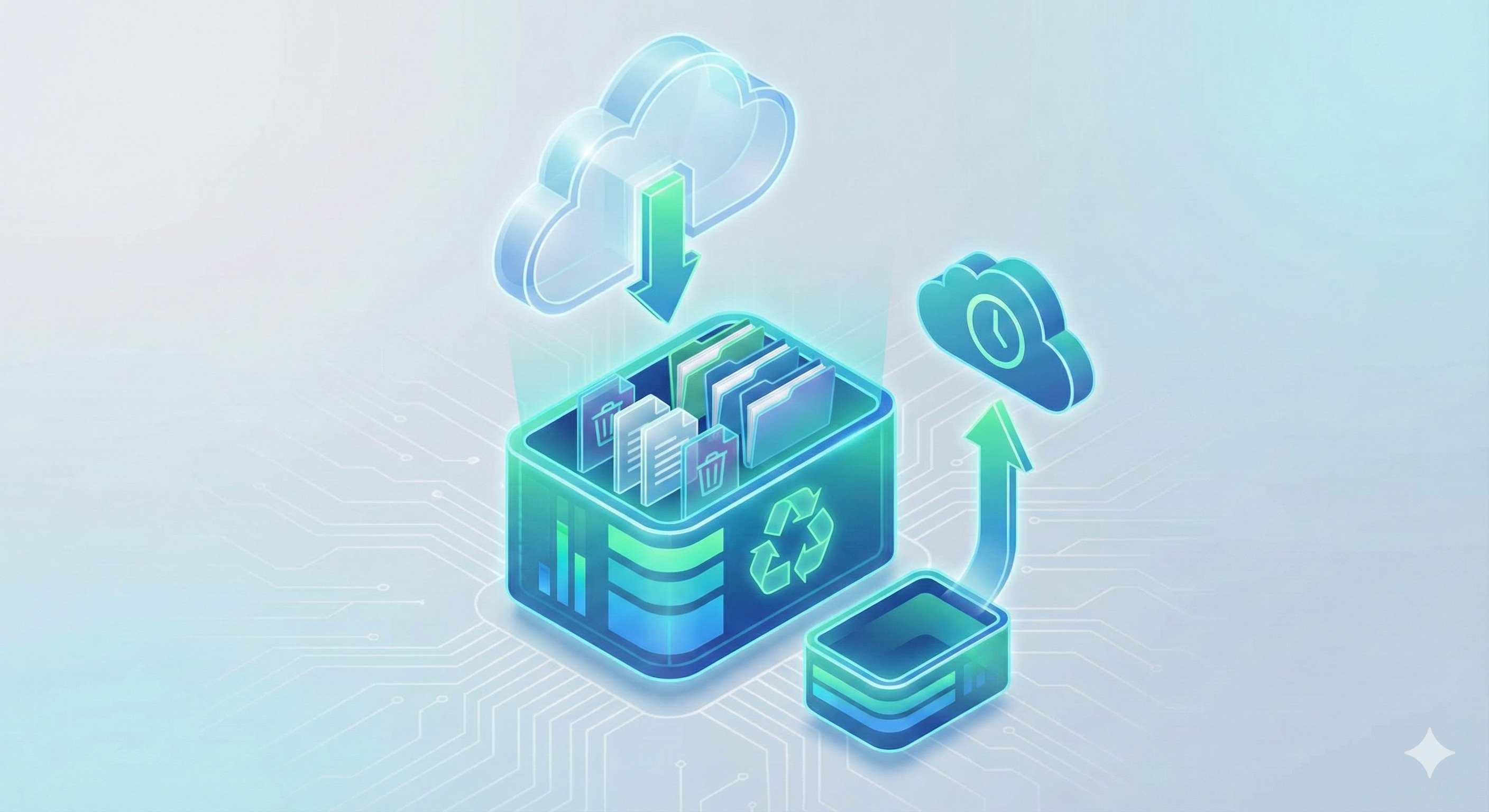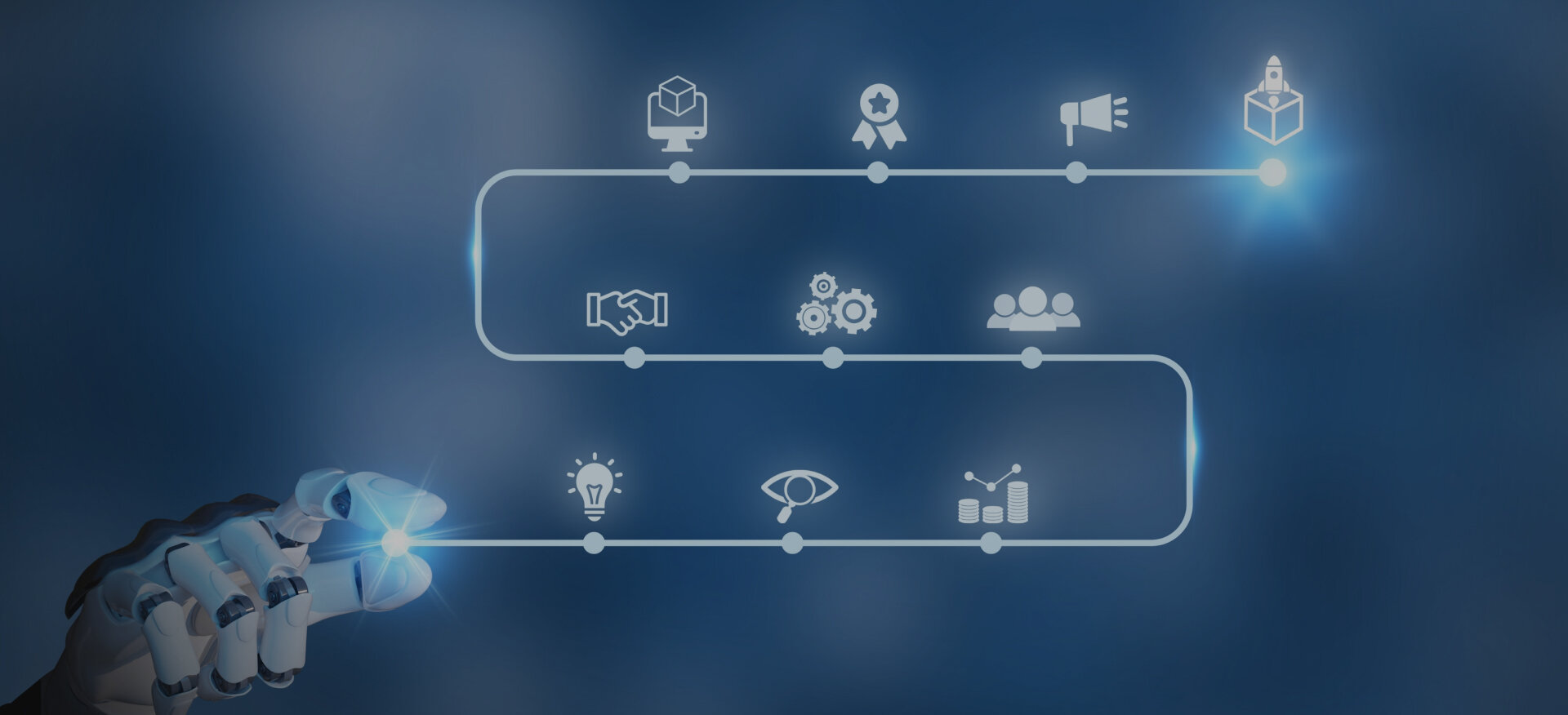Artificial Intelligence (AI) is changing the world. From smart assistants like Siri and Alexa to self-driving cars and recommendation systems, AI is everywhere. But many people wonder how to learn AI and where to start.
The good news is that anyone can learn AI—whether you’re a student, business professional, or tech enthusiast. With the right resources, you can understand AI basics, build AI models, and even create your own AI-powered applications. This is the best way to learn AI for beginners.
In this guide, you will:
-
Learn what AI is and how it works
-
Discover essential AI concepts like machine learning and deep learning
-
Find the steps to learn artificial intelligence and courses to start your AI journey
-
Understand how AI is shaping industries like business, marketing, and healthcare
What is AI? The Basics Explained
Artificial intelligence (AI) is the technology that allows machines and software to think, learn, and make decisions, just like humans. It powers the virtual assistants on your phone, the chatbots you interact with online, and even self-driving cars.
AI is becoming an essential part of our daily lives, helping businesses, schools, and even governments make better decisions. But what exactly is AI, and how does it compare to AI vs Human intelligence? Centric is also integrating AI into its operations to improve services.
AI is not just one technology, but a collection of different techniques and approaches that help computers solve problems, recognize patterns, and improve over time. Knowing how can I learn AI is key to understanding the big picture.
From recommending movies on Netflix to helping doctors diagnose diseases, AI is everywhere. In this article, we’ll break down the basics of artificial intelligence, the different types of AI, and how it’s used in business, marketing, and technology today.
Explore the story of AI in Sam Altman’s OpenAI and Artificial Intelligence.
6 Major Types of AI
AI is often divided into two main categories, based on how much it can do and how "intelligent" it is:
![]()
1. Narrow AI (Weak AI)
Narrow AI is designed to perform specific tasks and excels within its domain but lacks generalization. Examples include voice assistants like Siri, recommendation systems, and facial recognition.
2. General AI (Strong AI)
General AI can perform any intellectual task a human can. While still theoretical, it would have the ability to learn, reason, and adapt across various domains, similar to human intelligence.
3. Artificial Superintelligence (ASI)
ASI is the hypothetical AI that surpasses human intelligence in all aspects, including problem-solving, creativity, and emotional intelligence. It remains speculative and poses significant ethical concerns.
4. Reactive Machines
These AI systems react to specific situations without storing past data. Examples include IBM's Deep Blue, which played chess by evaluating the current game state but had no memory of past moves.
5. Limited Memory AI
Limited memory AI uses historical data to make decisions but doesn’t retain long-term learning. Self-driving cars and chatbots are examples, where past interactions improve real-time performance.
6. Theory of Mind AI
This AI, still in development, aims to understand human emotions and psychological states. It would enable AI to interact more empathetically, with potential applications in healthcare and customer service.
Each type of AI offers different capabilities, from narrow, task-specific systems to the more advanced and theoretical forms that could transform industries.
Where is AI Used Today?
AI is not just a futuristic concept—it is already a huge part of our daily lives. Some of the most common applications of AI include:
1. AI in Business & Marketing
-
AI SEO software helps businesses analyze data, predict customer behavior, and personalize digital marketing campaigns. These are some of the best ways to learn AI, especially in business applications.
-
Companies like Amazon and Google use AI to understand what customers like and offer them personalized recommendations.
-
AI-powered chatbots handle customer service questions 24/7.
However, some individuals may want to manage their privacy or control their interactions with AI. If you're unsure about how to turn off Meta AI or other similar features, it’s important to check the privacy settings and control your preferences for a personalized AI experience.
2. AI in Healthcare
-
AI-powered diagnosis tools help doctors detect diseases faster.
-
Robot-assisted surgeries improve precision and patient outcomes.
-
AI helps manage hospital records and streamline medical data.
3. AI in Autonomous Vehicles
-
Self-driving cars use AI to recognize road signs, detect obstacles, and make driving decisions.
-
AI-powered navigation systems optimize routes and reduce traffic congestion.
Discover how AI is shaping self-driving cars in Cruise Self-Driving Robotaxis.
4. AI in Content Creation
-
AI tools like ChatGPT and Jasper help people generate text, scripts, and blog content.
-
AI-powered design tools create logos, marketing visuals, and video content.
Find out the limitations of AI-generated content in AI Content Creation Limitations.
Explore Our Web Design & Development Services!
How to Start Learning AI? A Step-by-Step Guide
Artificial Intelligence (AI) is a rapidly growing field that’s reshaping industries, from healthcare and finance to entertainment and transportation. Despite its increasing influence, many people believe that AI is too complex to learn. However, with the right approach, anyone can start learning AI, whether you're a complete beginner or have some experience in programming.
![]()
Here’s a step-by-step guide to help you begin your AI journey.
1. Learn the Basics of AI
Before jumping into coding and developing AI systems, it's essential to understand the foundational concepts of AI. Gaining a solid grasp of what AI is and how it works is the first step in becoming proficient. Here are some ways to start learning the basics of AI:
-
Online AI Courses: Platforms like Google AI, Coursera, and Udacity offer beginner-friendly courses that provide a structured approach to learning AI. These courses often cover topics like machine learning, neural networks, and deep learning.
-
AI Blogs and Books: Reading blogs and books from AI experts can help you get up to speed with the latest developments and key concepts in the field. Some recommended books include "Artificial Intelligence: A Modern Approach" by Stuart Russell and Peter Norvig.
-
YouTube Tutorials: There are many YouTube channels dedicated to explaining AI concepts in a clear and digestible way. Channels like “3Blue1Brown” and “Siraj Raval” offer visually appealing and easy-to-understand videos.
-
Stay Updated: Follow thought leaders in AI like Sam Altman, the CEO of OpenAI, to learn about the latest advancements and discussions in the AI world.
2. Start with Simple AI Tools
You don’t need to be a coding expert to start working with AI. Several beginner-friendly AI tools allow you to experiment with AI concepts and see results without writing a single line of code. This is a great way to get hands-on experience while learning. Some popular AI tools for beginners include:
-
Google’s Teachable Machine: This tool allows you to train a machine learning model using your own data (like images, sounds, or poses) without needing any coding skills. It’s an excellent tool for understanding how AI works.
-
RunwayML: A platform designed for creative projects, RunwayML lets you explore AI-powered tools that can help in video editing, image generation, and more—perfect for those who want to apply AI in creative fields.
-
ChatGPT & Jasper: AI content-writing tools like ChatGPT and Jasper make it easy to explore the capabilities of AI in generating text. These tools help you understand natural language processing (NLP) by interacting with AI systems that can write articles, answer questions, or create text based on prompts.
3. Learn to Code (Optional but Helpful!)
While you can start experimenting with AI tools without knowing how to code, learning how to program will give you a deeper understanding and allow you to build more complex AI applications. Python is the most popular programming language used in AI development due to its simplicity and the vast number of libraries available for machine learning and data analysis.
Here’s how to get started with coding for AI:
Learn Python Basics: Before diving into AI-specific libraries, it’s important to have a solid foundation in Python. Learn the basic concepts like variables, data types, loops, and functions. Once you’re comfortable with the language, move on to more advanced topics like object-oriented programming.
Explore AI Libraries: Once you understand Python, you can start learning libraries that are essential for AI development:
-
TensorFlow: An open-source framework developed by Google for building and training machine learning models.
-
Scikit-learn: A user-friendly library for machine learning that provides simple tools for data analysis, classification, and regression.
-
Keras: A high-level neural networks API that runs on top of TensorFlow, making it easier to build deep learning models.
4. Work on Projects
The best way to solidify your AI skills is by applying what you’ve learned to real-world projects. Start with small, manageable projects, such as building a simple machine learning model to predict housing prices or a neural network to recognize handwritten digits (using datasets like MNIST). As you progress, you can tackle more complex problems, like developing a chatbot or implementing computer vision.
5. Stay Consistent and Keep Learning
AI is a constantly evolving field, so it’s important to stay committed to learning. The journey might seem overwhelming at times, but consistency and persistence are key. Regularly practicing through coding challenges, exploring new AI tools, and engaging with the AI community will help you stay on track.
There are also many online forums, such as Stack Overflow and AI-specific Reddit communities, where you can ask questions, share your progress, and learn from others.
7 Challenges of Learning AI
Learning artificial intelligence (AI) can be an exciting and rewarding journey, offering numerous career opportunities and the chance to make an impact across various industries. However, the path to mastering AI comes with its own set of challenges. These hurdles can often be overwhelming for beginners, but with the right approach and persistence, they can be overcome efficiently. Let’s delve into the common challenges that learners face when studying AI, as well as strategies to address them.
1. Technical Terminology and Complex Concepts
For many beginners, the sheer volume of technical terminology in AI can be daunting. Terms like machine learning (ML), neural networks, deep learning, natural language processing (NLP), and reinforcement learning can initially seem foreign and complex. These concepts may feel abstract and difficult to grasp, especially without a solid foundation in mathematics or computer science. To tackle this challenge, it’s essential to build a strong base in the fundamentals. Begin with an understanding of linear algebra, calculus, probability, and statistics, as these are the building blocks of most AI algorithms. Over time, as you gain more experience with hands-on projects and real-world applications, the terminology will become more intuitive.
2. The Rapidly Evolving Nature of AI
One of the most challenging aspects of learning AI is the field's rapid pace of innovation. AI is a constantly evolving domain, with new algorithms, tools, and techniques emerging regularly. As a result, learners need to stay updated with the latest advancements and trends to remain competitive and relevant. This constant change means that learning AI is not a one-time event but an ongoing process. Keeping up with the latest research papers, attending online courses, and participating in AI-focused communities can help learners stay informed. Also, diving into hands-on projects and experimenting with new frameworks can allow learners to apply the most current technologies to real-world problems.
3. Understanding the Complexity of AI Algorithms
AI algorithms can be complex and often require a deep understanding of how they work behind the scenes. For example, neural networks are inspired by the human brain and consist of layers of interconnected nodes, each performing mathematical operations. Understanding the inner workings of these algorithms can be a daunting task for beginners. To tackle this, learners can break down each algorithm into smaller, more manageable pieces and focus on mastering one component at a time. By working through simple examples and gradually increasing the complexity of projects, learners can build a deeper understanding of how these algorithms function and how they are applied in real-world scenarios.
4. Continuous Learning and Adaptability
AI is a field that requires continuous learning, especially since new breakthroughs occur regularly. Algorithms that were groundbreaking a few years ago may be replaced by more efficient and powerful models. This rapid pace of change can be frustrating, as it often feels like learners need to play catch-up. However, this is also what makes AI such an exciting and dynamic field. To handle this challenge, learners should adopt a mindset of adaptability and lifelong learning. Staying engaged with the community through online forums, attending conferences, and contributing to open-source projects can help learners keep their knowledge up-to-date.
5. Ethical Concerns and Bias in AI
AI systems are designed to automate tasks, but they are not immune to flaws, particularly when it comes to biases. Bias in AI can occur when the data used to train machine learning models is incomplete or skewed, leading to unfair or discriminatory outcomes. For example, AI systems used in hiring practices or criminal justice may inadvertently reinforce societal biases, leading to biased decisions. These ethical concerns present a significant challenge for AI developers and learners alike. Understanding the ethical implications of AI is crucial, and learners should explore topics like fairness, accountability, transparency, and privacy. By staying informed about the potential risks and learning how to mitigate them, learners can contribute to building AI systems that are more ethical and equitable.
6. Data Availability and Quality
Data is the lifeblood of AI systems, but accessing high-quality, labeled data can be a major roadblock for learners. AI models require large volumes of data to train effectively, and acquiring this data can be time-consuming and costly. Furthermore, data quality is just as important as quantity. Clean, well-labeled data is essential for training models that produce accurate and reliable results. To overcome this challenge, learners can start by working with publicly available datasets or explore ways to generate synthetic data. Additionally, learning about data preprocessing techniques, such as cleaning, normalization, and feature engineering, is essential to ensure the data used in AI models is of high quality.
7. Computing Resources and Infrastructure
AI models, particularly deep learning models, require substantial computing resources to train. High-performance GPUs or TPUs are often necessary to handle the large-scale computations involved in training models on vast datasets. For beginners, this can be a significant barrier, as access to such resources can be expensive. To address this, learners can leverage cloud computing platforms like Google Colab, Amazon Web Services (AWS), or Microsoft Azure, which offer affordable access to powerful computing resources for AI tasks. Additionally, many online courses and tutorials provide free access to cloud-based environments where learners can practice without the need for expensive hardware.
How Does AI Work?
AI systems learn from data and use that information to make predictions or decisions. Instead of following predefined rules, AI systems improve over time as they process more data. This is what makes AI so powerful—it can adapt, evolve, and become more accurate with experience.
For example:
-
Google Assistant and Alexa use AI to understand your speech and respond to your questions.
-
Netflix and YouTube use AI to recommend videos and shows based on what you’ve watched before.
-
Online chatbots can answer customer service questions without human help.
-
Smart cars use AI to detect obstacles and drive safely on the road.
AI works through three major techniques:
-
Machine Learning (ML) – AI systems learn patterns from data and improve without human intervention.
-
Deep Learning – A more advanced type of machine learning that mimics the way the human brain processes information.
-
Natural Language Processing (NLP) – AI that understands and processes human language, allowing chatbots and voice assistants to communicate effectively.
AI is revolutionizing industries worldwide. Learn how AI is transforming marketing in Supercharge Marketing with AI Tools.
AI in Business and Marketing
AI isn’t just for tech companies—it’s reshaping industries like business, marketing, and retail, making processes smarter, faster, and more efficient. Companies use AI to analyze customer behavior, automate tasks, and personalize experiences, helping businesses make better decisions and improve customer satisfaction.
In marketing, AI helps brands understand consumer preferences, buying habits, and trends, allowing them to create highly targeted marketing tactics and creative campaigns. AI-driven chatbots and virtual assistants have transformed customer service, offering instant responses and 24/7 support to customers. In retail, AI recommends products, optimizes inventory management, and enhances shopping experiences.
-
AI in Marketing – Helps businesses analyze data and predict customer behavior.
-
AI in Retail – Suggests products based on customer preferences for a personalized experience.
-
AI in Customer Service – Chatbots provide instant, 24/7 assistance to customers.
Explore the challenges of AI in the real world with AI Fashion and Retail Mall Transformation.
Future of AI: What’s Next?
Artificial Intelligence is evolving at an incredible pace, reshaping industries and changing the way people interact with technology. The future of AI holds endless possibilities, from enhancing everyday conveniences to tackling complex global challenges.
One of the most anticipated developments is the rise of smarter AI assistants that go beyond answering simple questions. Future AI systems are expected to understand human emotions, interpret tone and context, and engage in meaningful conversations. This could revolutionize customer service, mental health support, and even personal productivity tools. With advancements like these, many are asking Will AI Replace Accountants, as AI technology could handle tasks like bookkeeping and data analysis more efficiently.
Another significant area where AI is set to expand is healthcare. AI-driven solutions will play a vital role in early disease detection, robotic-assisted surgeries, and personalized medicine.
With the ability to analyze vast amounts of patient data, AI will help doctors make faster, more accurate diagnoses while recommending tailored treatment plans.
In the transportation sector, autonomous vehicles are becoming a reality, promising safer roads, reduced traffic congestion, and improved fuel efficiency. Self-driving technology will likely extend beyond cars to include AI-powered public transport systems and delivery drones.
As AI continues to advance, cities are also becoming smarter. AI-driven infrastructure will optimize energy use, traffic flow, and public safety.
FAQs: How to Learn AI?
What is the best way to learn AI for beginners?
The best way to learn AI for beginners is to start with foundational concepts such as machine learning, neural networks, and data science. Understanding what is inbound marketing? can also enhance how AI is applied in marketing. Beginners can explore free online courses, read AI-related blogs, and use beginner-friendly tools like Google's Teachable Machine. Learning programming languages like Python also greatly helps in building AI models.
How can I learn AI without any coding experience?
If you don't have coding experience, there are plenty of AI resources available that don't require programming skills. Tools like Google's Teachable Machine and AI-powered platforms like RunwayML allow you to experiment with AI models. However, learning the basics of Python will open up more opportunities for building and understanding AI.
How do I start learning AI from scratch?
To start learning AI from scratch, begin by understanding basic concepts such as algorithms, data processing, and machine learning. Utilize online resources like Coursera, Udacity, or free YouTube tutorials. Once you grasp the basics, explore hands-on projects, and gradually dive into advanced topics like deep learning and natural language processing.
What are the first steps to learning AI?
The first steps to learning AI involve familiarizing yourself with basic concepts like machine learning, neural networks, and data structures. You can take beginner-friendly online courses, read introductory books, and practice with simple AI tools. As you progress, start learning coding languages like Python, which is essential for AI development.
Can I learn AI for free as a beginner?
Yes, you can learn AI for free as a beginner. There are many free resources available, including online courses on platforms like Coursera and edX, as well as tutorials on YouTube. AI blogs, forums, and open-source tools also provide valuable insights and practice opportunities for those new to AI.
Conclusion:
If you’ve ever wondered how to learn AI, there has never been a better time to start. AI is rapidly transforming industries, revolutionizing the way we work, and creating new opportunities in business, technology, healthcare, and beyond. Whether you are a beginner curious about AI or a professional looking to integrate AI into your work, the key is to start small, stay curious, and keep learning.
Learning AI doesn’t require an advanced degree. There are countless free resources, online courses, and user-friendly AI tools that make it easier than ever to understand machine learning, natural language processing, and AI-powered automation. The more you experiment, the more confident you’ll become in using AI to solve problems, improve efficiency, and even create new innovations.
Ready to begin your AI journey? Get started today and be part of the AI revolution!









